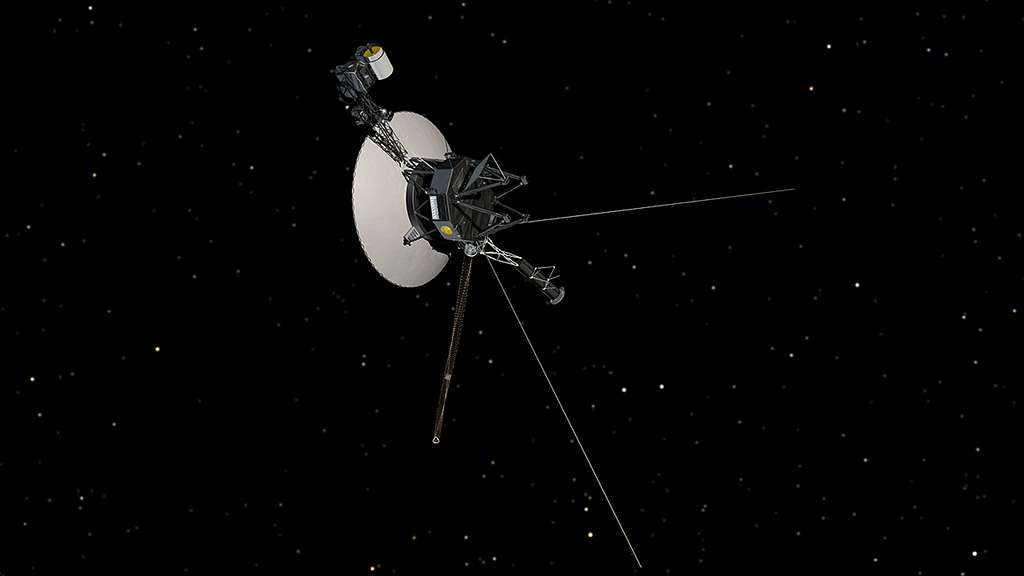Voyager 1\'s Last Transmission Signals Urgent Repairs from 24 Billion Kilometers Away

In a distant corner of our solar system, Voyager 1, the farthest human-made object from Earth, is facing a communication crisis as it sends back an unintelligible stream of 1s and 0s. Located 24 billion kilometers (15 billion miles) away, the spacecraft's glitch has put NASA scientists on high alert as they work tirelessly to restore its nearly 50-year-old computers.
The glitch, originating from a disruption in communication between the probe's flight data system (FDS) and the telemetry modulation unit (TMU), has left experts grappling with a perplexing challenge. While the probe can still receive commands from Earth, messages destined for interstellar space require a staggering 22.5 hours of travel, making real-time diagnostics impossible.
NASA engineers, undeterred by the astronomical distance, are in a race against time to decipher and fix the malfunction. However, given the lag in communication, it will be days before they can determine the success of their restoration efforts.
This isn't the first time Voyager 1 has faced technical issues. In 2022, the probe transmitted data through a malfunctioning computer, corrupting outgoing messages. NASA engineers successfully identified and rectified the problem, but the resolution took several months.
The current glitch poses a unique challenge, with the disruption affecting the transmission of both scientific data about interstellar space and critical engineering data detailing the probe's health and status. Despite engineers attempting basic troubleshooting, such as turning the FDS on and off, the issue persists.
To resolve the crisis, NASA's team is delving into decades-old documentation on the probe's outdated technology. Voyager 1's computers, capable of processing a mere 8,000 instructions per second, highlight the vast technological advancements since the mission's launch in 1977. In comparison, today's smartphones can handle over 100 billion instructions per second.
Originally designed to explore Jupiter and Saturn, the Voyager 1 and Voyager 2 probes have exceeded their expected lifespan. Now journeying through interstellar space, these aging pioneers are far beyond their intended mission parameters. Placing another probe in their current location would necessitate decades of planning and execution.
Scientists are hopeful that, if the glitch is resolved, Voyager 1 can continue its mission until its 50th birthday. However, the probes' days are numbered. Beyond the Oort Cloud, on the fringes of the Kuiper Belt, their generators will eventually run out of power, silencing these iconic explorers.
In light of the recent communication breakdown, some have suggested sending a final message to Voyager 1 before its inevitable loss of communication. These 'last words,' if encoded into the probe's memory, could endure for millennia.
The glitch in Voyager 1's transmission serves as a poignant reminder: time is running out to bid farewell to these trailblazing spacecraft that have provided invaluable insights into the mysteries of our solar system.
10 Month Ago
Robbers Loot Jewelry Shop in Mahottari; Traders Sh..
10 Month Ago
Trump and Putin to Discuss Ukraine on Tuesday
YOU MAY ALSO LIKE THIS
Top Free AI Websites in 2025 and Their Key Features
Artificial Intelligence continues to revolutionize how we work, create, and communicate, and 2025 offers an impressive array of fr..
2 Month Ago
2025 Global Entertainment Industry Sees Rising Streaming Subscriptions..
The global entertainment industry in 2025 continues to evolve rapidly with streaming platforms leading the way in reaching new aud..
2 Month Ago
Global Carbon Emissions Hit Record High in 2025 Despite Climate Effort..
In 2025, global carbon dioxide emissions from fossil fuels reached a record high, increasing by 1.1% compared to the previous year..
2 Month Ago

_1763308546.png)
 (1)_1763140461.png)
_1763140142.png)

